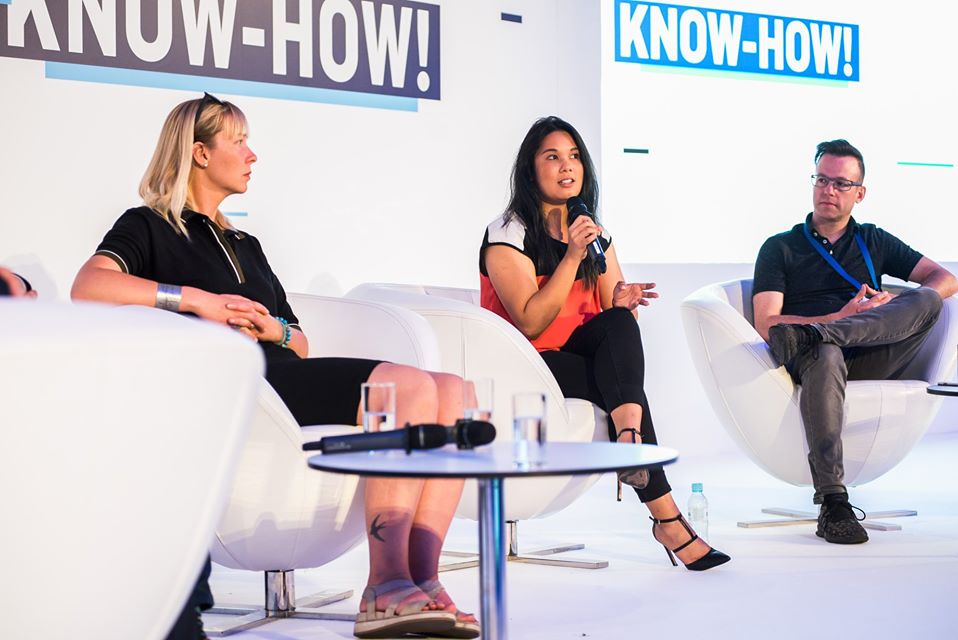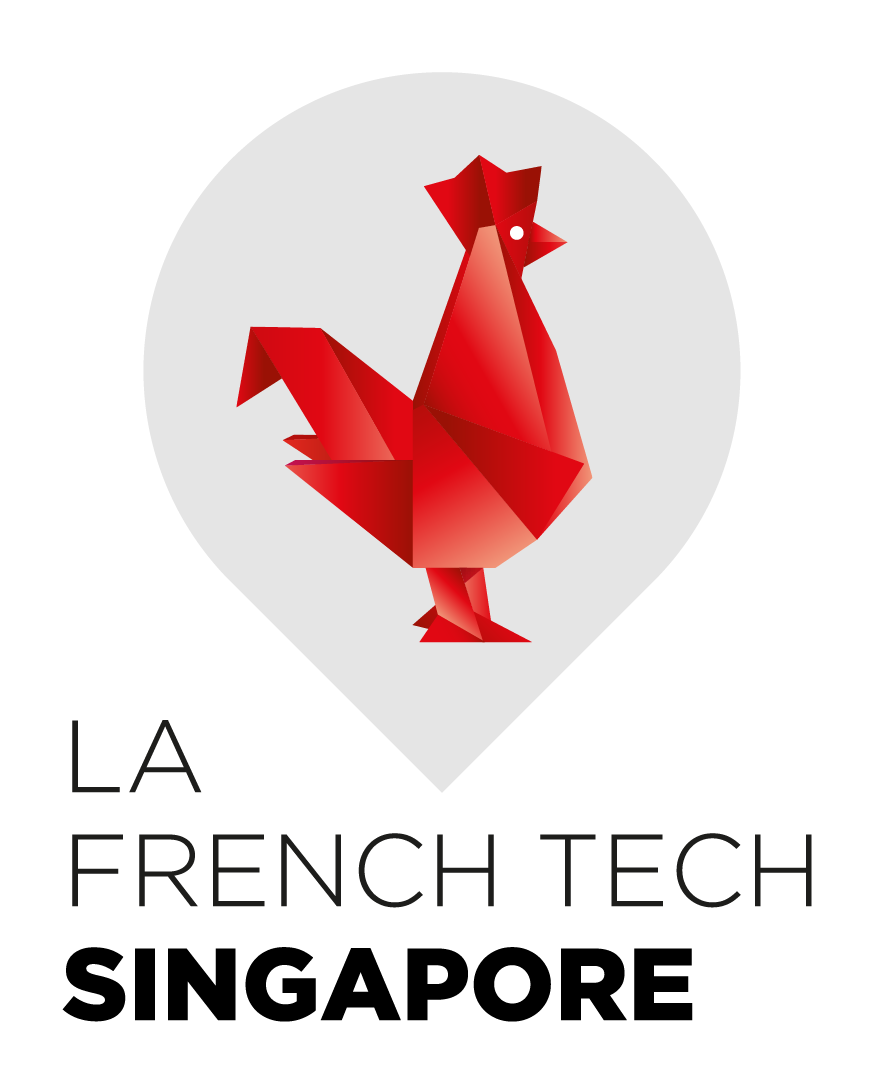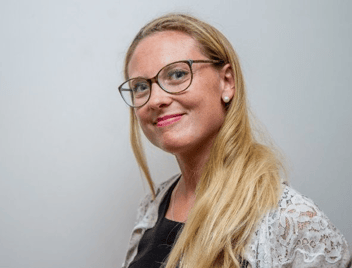
Hi Amra, what do you do and what brought you to Asia?
I actually originally came to Singapore after leaving my marketing job in Australia in 2013, for a 3-month internship at UN Women Singapore. It was a massive risk for me at the time and I chewed through all my savings for the opportunity, but I was looking for a career change and it ended up being the catalyst for everything that I’ve done since. That 3-months ended up turning into 7 years in Singapore – much much more than I could have imagined!
Now I’m currently the Cofounder of Accelerating Asia and General Partner at Accelerating Asia Ventures, which is a network of startup programs and an early stage venture fund. Through this, my role is to raise and manage funds, support our Limited Partners, monitor and evaluate investment decisions and help our portfolio companies with fundraising. And, as Co-Founder of Accelerating Asia I mainly look after operations and partnerships which means leading engagement with our diverse range of government, investment and partners.
Before Accelerating Asia, I looked after community and operations for Telstra’s muru-D accelerator in Southeast Asia. That’s actually where I met Craig Bristol Dixon, who at the time was the Entrepreneur in Residence, now my cofounder!
My journey to get to where I am now started at UN Women Singapore, I led Project Inspire – a global social entrepreneurship program in partnership with Mastercard. We looked for entrepreneurs around the world, creating impact for women and girls, brought them to Singapore for an intense bootcamp which culminated in a pitch day where the winners received grant funding from our partners.
At the same time, I was looking after corporate partnerships, working with multinationals based in Singapore on their corporate social responsibility (CSR) and diversity initiatives. It was an insightful time for me as I was able to see how multinationals were looking at impact from a top-down perspective, while at the same time working with entrepreneurs tackling it from a grassroots, bottom-up perspective.
Honestly, I’m just passionate about business for good and finding ways of aligning commercial goals and impact, because despite what many people think, they don’t have to work in isolation.
Why Accelerating Asia? Why is it different than other startup programs or funds?
During my time with UN Women, I realised two things: first that the entrepreneurs we were working with were mostly coming to us looking for funding for tech solutions. Second, that they generally came from a place of looking at the cause and having a profound understanding of the social issues at hand, though did not have the business acumen to scale their ideas or even to make them financially sustainable.
I started looking for other models and became very interested in the startup ecosystem where I could see a lot of very enthusiastic entrepreneurs creating things, and that could potentially be very complementary to what the social entrepreneurs I was working with brought to the table. I joined the muru-D team, where I learnt more about the startup ecosystem. I realised there were great entrepreneurs in our region with businesses creating massive impact in their local ecosystems that were scalable and sustainable. Yet, they didn’t know much about the social impact ecosystem. Supporting the investment into and portfolio management of the startups through muru-D gave me great insight into how we could create a model that was both profit and impact-driven. Next, we started Accelerating Asia.
My Co-Founder Craig and I started Accelerating Asia in 2018 to fill the gap in the region for an accelerator that works with pre-Series A startups who have existing traction and a sound business model in the market.
There are many startup programs in the region, but most of them are very early stage (idea-stage or minimum viable product. So there is a significant gap and opportunity for startups that are a little bit further along in their journey; something for founders that have deep domain expertise and have built something on their own, but need some help to take things to the next level. We call ourselves pre-series A because we sit a little bit earlier than the institutional series A investors and later than the venture builders, incubators and pre-accelerator programs out there. Typically startups coming into our program already have significant revenue, a full team and working product. To give you an example, the average monthly recurring revenue coming into our program is about $25k USD.
We have a top-quality accelerator program for startup founders, invest in them through our venture fund, and have created a healthy ecosystem of partners such as governments, multinationals, universities and other organisations that are all interested in engaging with startups in various ways. Startups in our program have raised about $5 million USD during the program and grown their business by 2.5X.
It is challenging to do all of this if your interests aren’t directly aligned with the founders we work with, which is why we built a business model around our accelerator program so that we could remain independent – if our startups succeed, we succeed.
How do you decide which startups to work with?
At Accelerating Asia, we work off an accelerator/venture capital fund model. This means that we invest in startups in our flagship accelerator through the Accelerating Asia Venture Capital fund. There’s a few reasons why we chose this model and it influences how we decide what startups to work with.
- We target a specific maturity level that we call “Pre-Series A”. We define that as startups that already have a full team, a product being used by customers, and usually some revenue traction and early investment before they come into the program. We have found that these startups tend to be underserved in the region and from experience we know that we can upskill and derisk them and qualify them for institutional investment during or soon after leaving our program.
- The structure of having the Accelerator and Fund working together derisks our investments by both creating a portfolio approach to diversify risk while at the same time giving us detailed information on the underlying startups which allows us act quickly to take a larger stake in the top performers and to rapidly help our founders plug gaps and exploit opportunities.
- The geographies we target are some of the fastest growing on the planet, with rapid technological adoption rates and increasingly large middle classes with disposable income in countries with plenty of problems to solve.
Our funnel and investment terms are also a little bit different and have amended our terms over the three cohorts to better optimize our impact and our investment thesis. For the next cohort, we will invest an initial S$50k check, with up to S$200k available for the best 20-30% of the cohort that we take in. Typically in a recruitment period, we get in front of over 2000 startups per year, and we estimate we’ll get around 1000 applications submitted in 2020. Around 20 startups will be selected for the program, so it’s an incredibly thin filter, resulting in a success rate of around 2%. Taking 30% of that, only 0.6% of applicants will qualify for the additional funding.
What is your vision?
At Accelerating Asia, we believe that entrepreneurs are humanity’s greatest catalysts for positive change, so you could say we have a pretty optimistic view of what our world is going to look like in the future.
Ultimately, the job of a venture fund is to look into the future and make a prediction about what the world is going to look like. I really believe that we have the opportunity to bring a spotlight to some very underserved markets in the region, bring resources and opportunities to these founders and through our investments, take an active part in creating a future that will create meaningful change for people.
While we don’t believe that every issue in the world can be addressed through impact and business, with 65% of our portfolio now considered ‘impact’, we’re excited to see how we can continue to invest in and support opportunities where they do. We now have portfolio companies in 9 countries in this region including Indonesia, Malaysia, Myanmar, Australia, Bangladesh, Pakistan and more. I would love to get more people involved in supporting these startups and founders as mentors, investors and partners because this is what we have seen time and time again and it is what can accelerate the work of an entrepreneur – the people around them!
The way I see it is that the job of an entrepreneur is to solve a problem. So, in many cases by nature of where our startups are coming from in the region and the types of problems that need urgent action and solutions for in these places, we see entrepreneurs solving substantial social, environmental, infrastructure challenges or enabling access to services through technology.
And this is why I choose to put my support behind enabling entrepreneurs to do what they do best.
What’s next ?
For Accelerating Asia, we are working hard on our venture fund while currently exploring our next location in the region to expand our startup programs with local partners. It’s going to be an exciting year for us as a business as we expand our work to support even more startup founders.
We have also got two exciting new programs in the works to help build a stronger startup ecosystem in the region.
The first is Amplify, a 6-week virtual pre-accelerator program to extend our reach and support more startups in finding product-market fit, growth and capital raising. The second is Angel360, where we have partnered with Angel Investor networks around the region to create an 8-week angel investing basics course to encourage more people to get started as angel investors (especially women!). Angel investors play such an important role in the ecosystem and in spotting and backing early talent so we’d love to be able to support more angel investors understand the whole startup world better.
How “Dare you” to be a woman in venture capital?
Often when I walk into an investor event whether it be focused on angel investing, venture capital or private equity, I am the only woman representative from a VC fund in the room. I think it is easy to talk about how being one of the only young,
Asian women in the room is a challenge, and it can be. But, what I have realised though is that the biggest challenge in this industry is access. As with most industries that are difficult to get into for various reasons, getting into the industry and succeeding in it generally comes down to two things: your network and education. The industry is a very close community, and gaining access to deal-flow or your ability to raise investment for your fund comes down to whom you know or your ability to get to know the right people. This is the same not just for investors starting from outside the industry, but for founders too.
It can be filled with buzzwords and acronyms – when I first started, I had no idea what people were talking about. Not because I didn’t understand the concepts – they are logical – but it’s the words that are used that make breaking into the industry-exclusive, and I will admit, a little intimidating to participate in if you can’t speak the same lingo. Once I realised both of these things, I worked hard to upskill myself and really put myself out there. Having gone through this process (and still going through), I also realise your difference is your strength. When we look at startups for our portfolio and even just looking at everyone in our team, we all come from a completely different background personally and professionally, which means we are better equipped to look at challenges and opportunities from various perspectives.
How do you bring more diversity ?
Honestly, I dedicate the majority of my time during and outside of work hours to Accelerating Asia. Part of the reason for starting Accelerating Asia is wanting to look at the startup accelerator and venture fund model differently. In building something like this from the ground up and working with entrepreneurs in the region solving big challenges, I think we have a great opportunity to model our business in a way that thinks about diversity in tech as something that is not an add-on, but is integrated into our business and is core to how we make decisions and how we operate. I think promoting diversity is something that you incorporate in everything that you do, when you can, especially when you are in a leadership role.
On the investment front, our portfolio includes 40 percent female-led and co-founded ventures. In addition to supporting female-founded enterprises, we’ve also invested in multiple startups which have a focus on improving the lives of women—for example, BeamAndGo from the Philippines that empowers migrant workers by giving them control over how their remittances are spent by their families back home.
We have also just set up our Gender Advisory Group which will provide the Accelerating Asia team with strategic advice on how we can continue to improve and develop a more inclusive ecosystem.
For me personally in 2020, I have just relaunched my podcast to look more deeply into the ethics and morals behind the concept of doing good through business. It can be complicated when you start to get into areas with competing interests, thinking about the scale of impact versus depth and realising that ethics and morals are difficult to define. These are issues that the podcast will be moving more into in upcoming episodes.
Amra, thank you! Linkedin Amra Naidoo
Get in touch with us @ womenfrenchtech at gmail dot com
In collaboration with Amel Rigneau & Silvia Leiva



